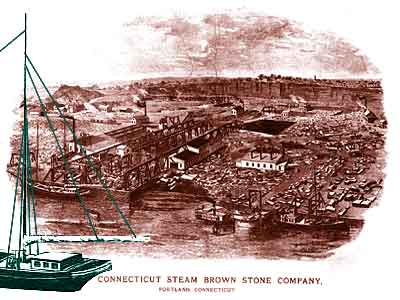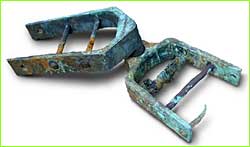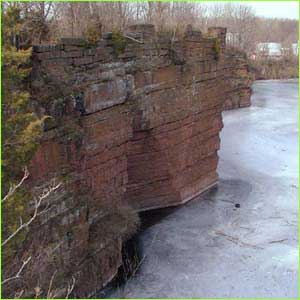



Engraving of the Portland brownstone quarry.
In 1999, a recreational diver reported his discovery of a brownstoner wreck off the coast of Westport. Vessels of this type transported brownstone, excavated from Portland Brownstone Quarries in Portland, CT, to most eastern cities.
The first known use of Portland brownstone was in 1679 for the flight of twenty massive steps at the Old Province house in Boston. In New York City, most of the building fronts on Fifth and Madison Avenues are built of this reddish-brown sandstone. In 1880, "Connecticut brownstone" as it was known in the market, was used in the construction of nearly 80% of the stone buildings in New York City. Nearly every eastern city in the US and Canada has buildings displaying brownstone from the National Historic Landmark Portland Brownstone Quarries.
The mid to late 19th century "Connecticut brownstone" building boom slowed in the 20th century with the changing architectural fashion and the use of more modern building materials. After nearly 250 years of continual operation, the quarries were permanently closed due to significant flooding caused by the Connecticut River overflow in 1936 and the hurricane of 1938.
Shipping the stone was relatively inexpensive and easy because the Portland quarries were located along the banks of the Connecticut River. Most of the stone was shipped down the river in "brownstoners". These Connecticut vessels were usually schooners or sloops. They tend to be beamy (wide) for stability with shallow drafts so they could get over the bars at the mouth of the Connecticut River.


Rudder pintle assembly excavated from the Brownstone Schooner (above) and the Portland Quarry as it appears today (right).